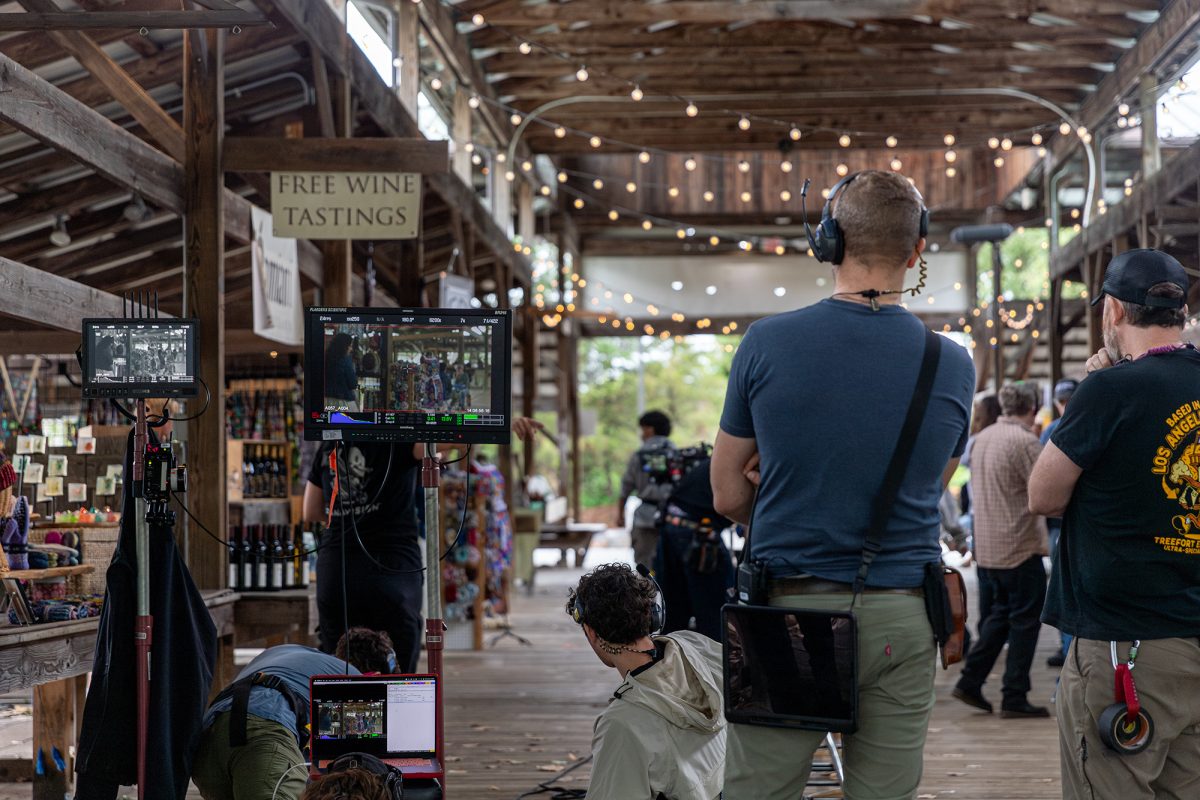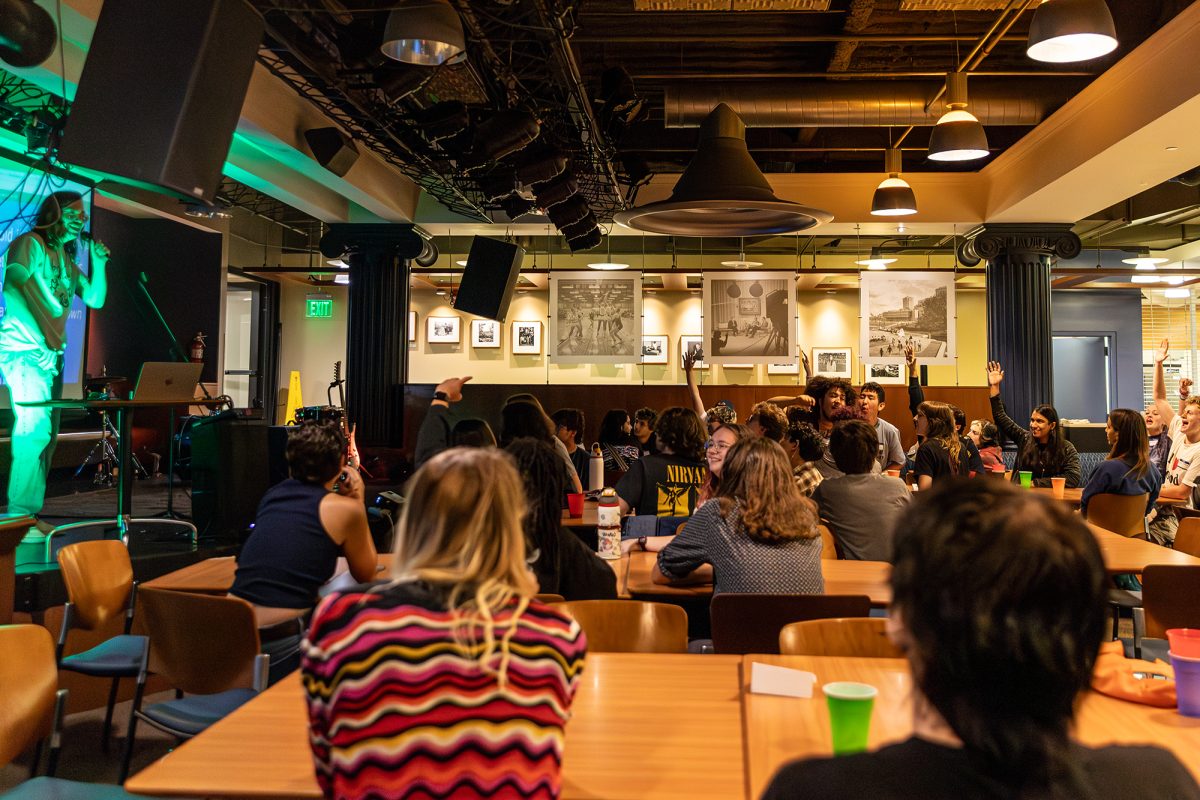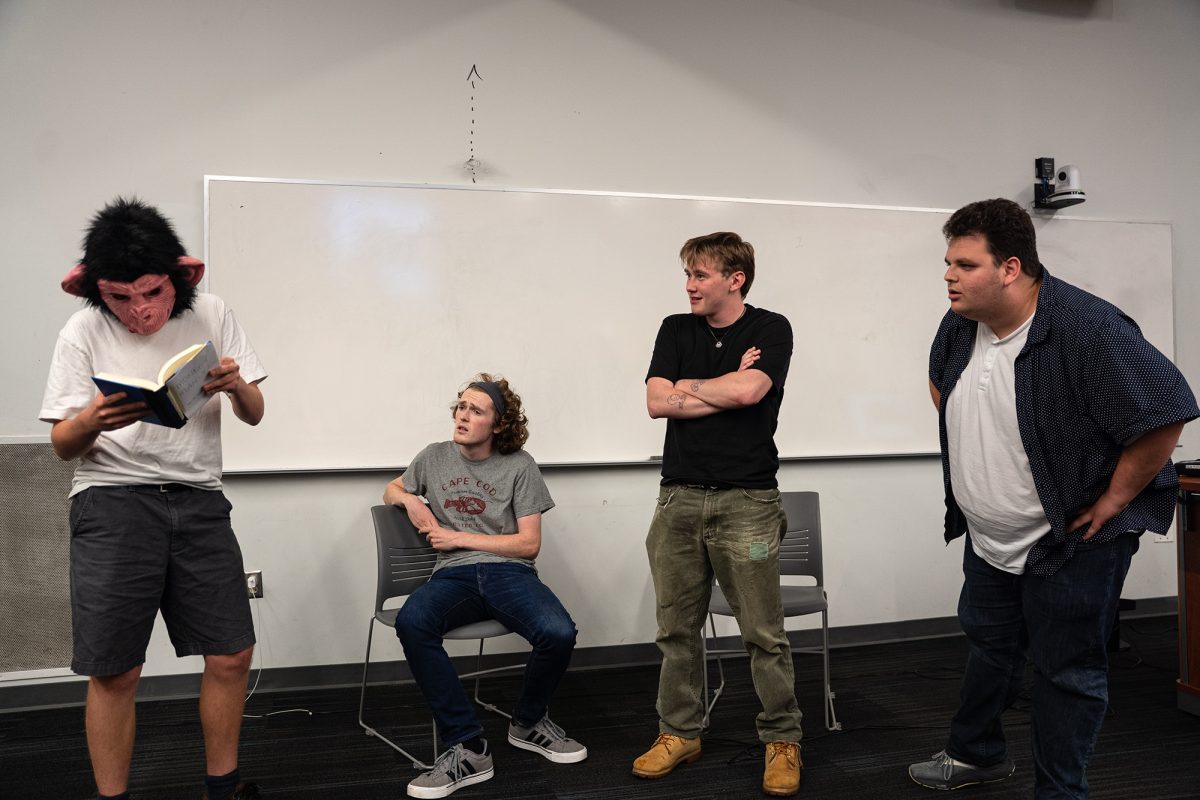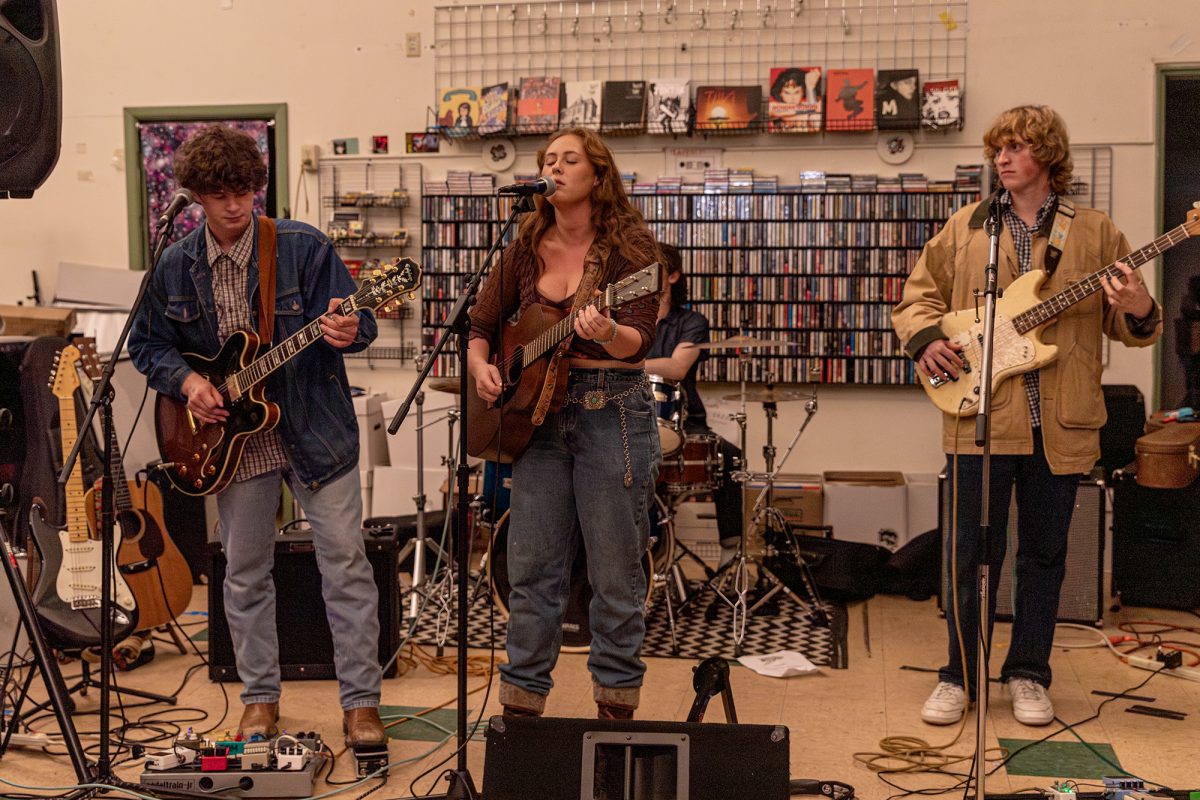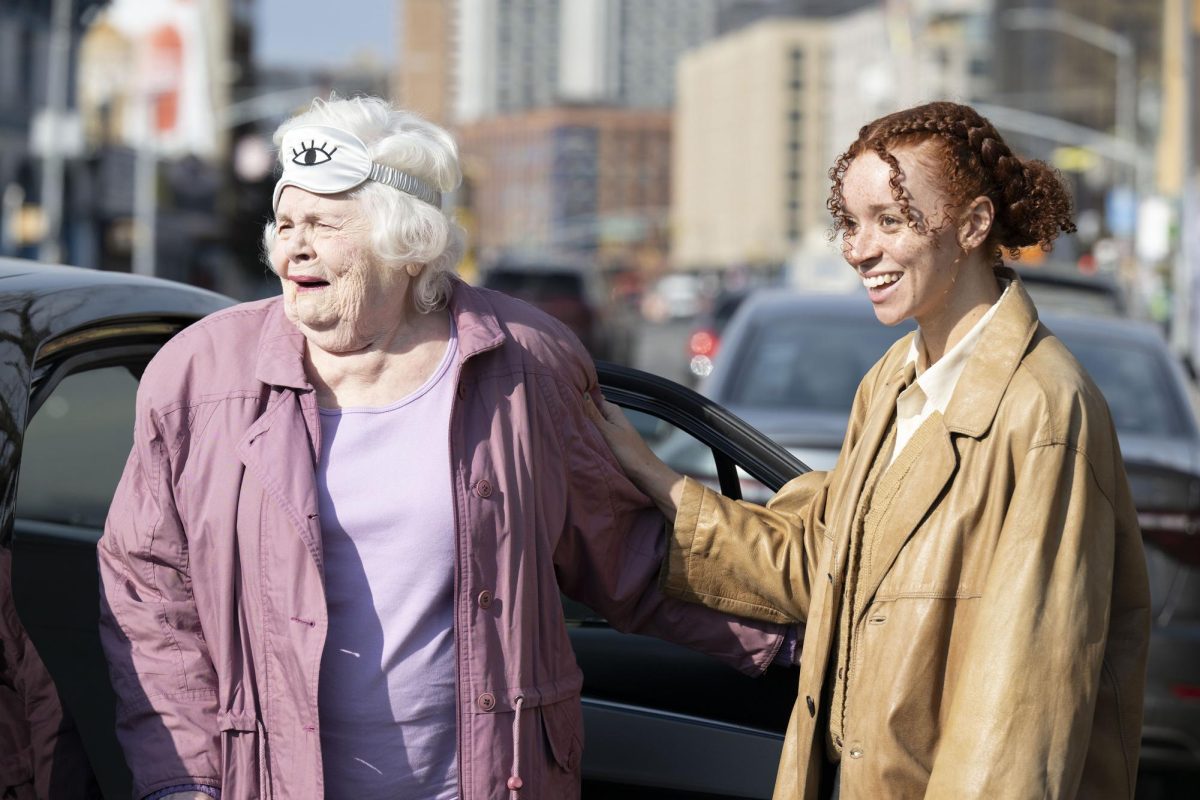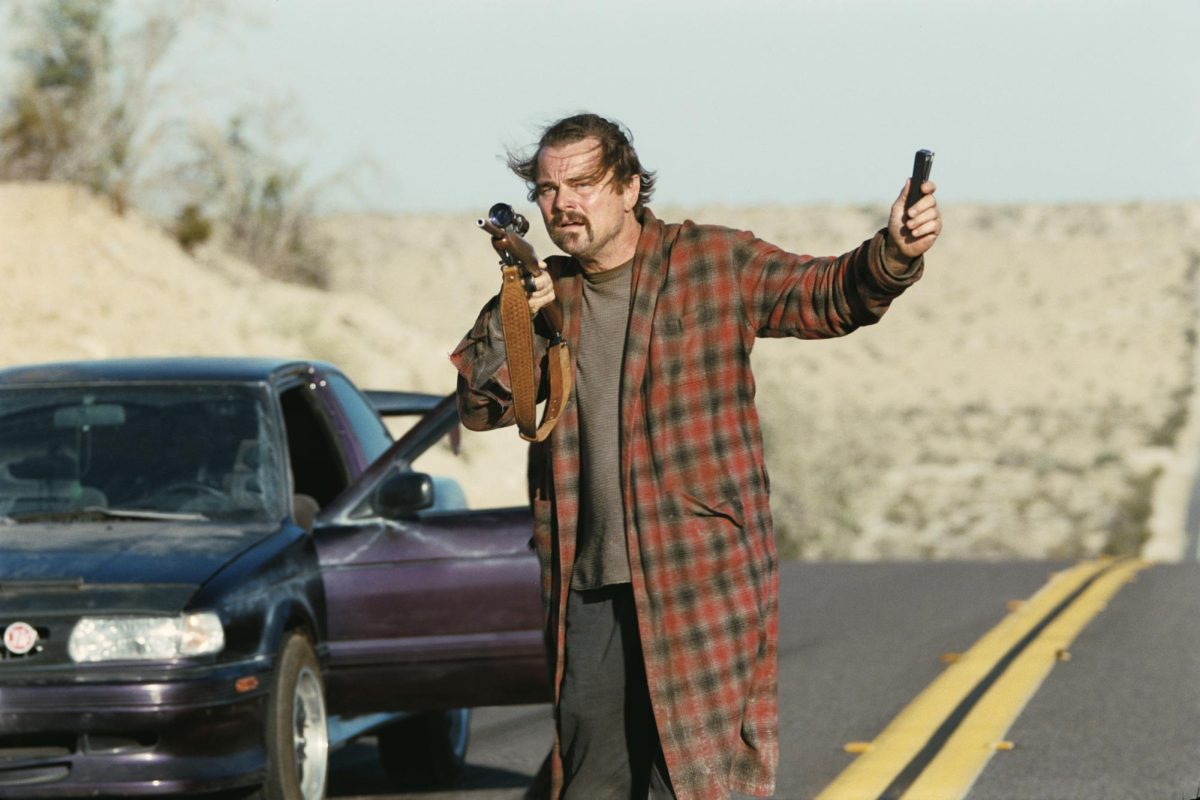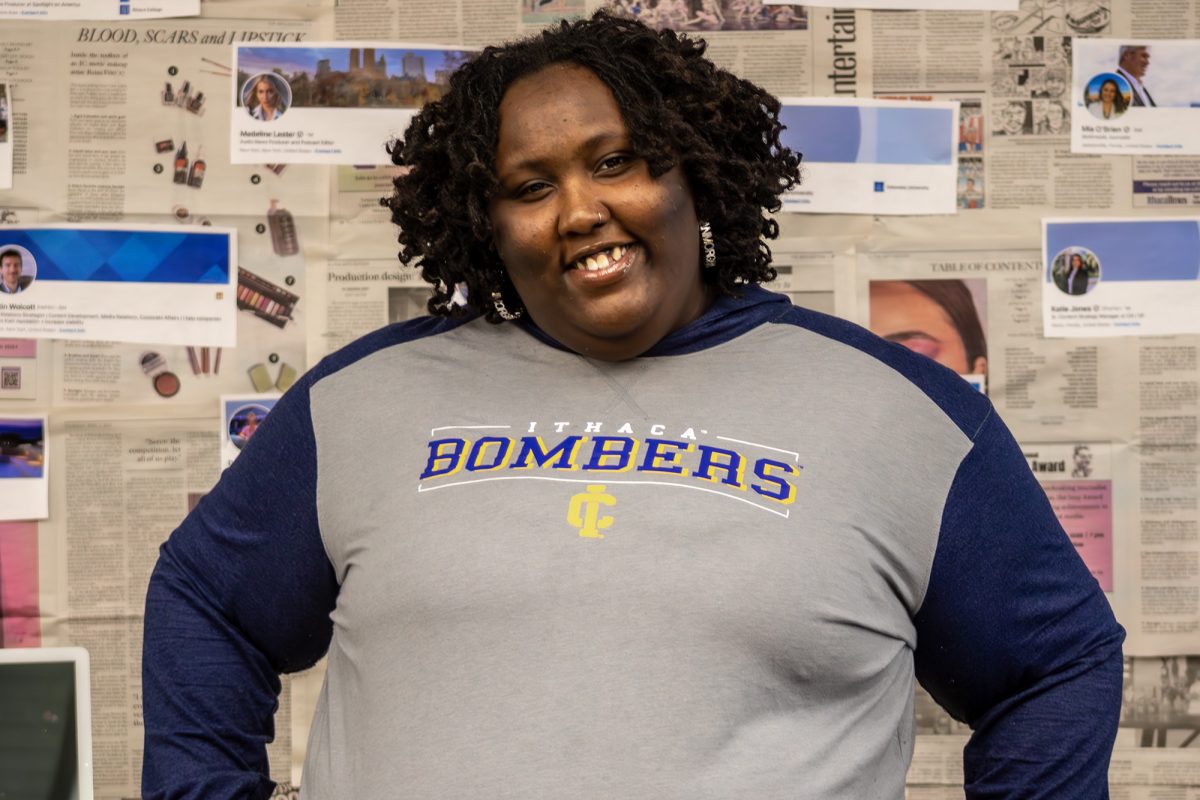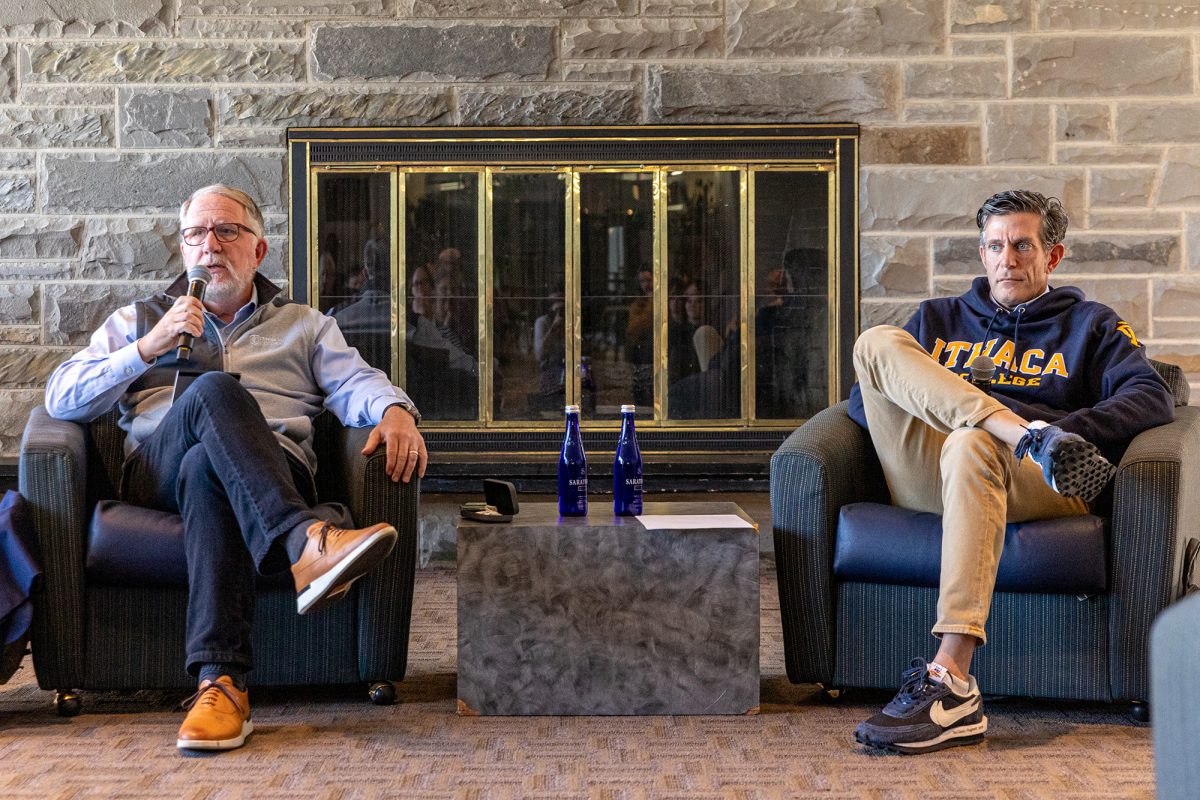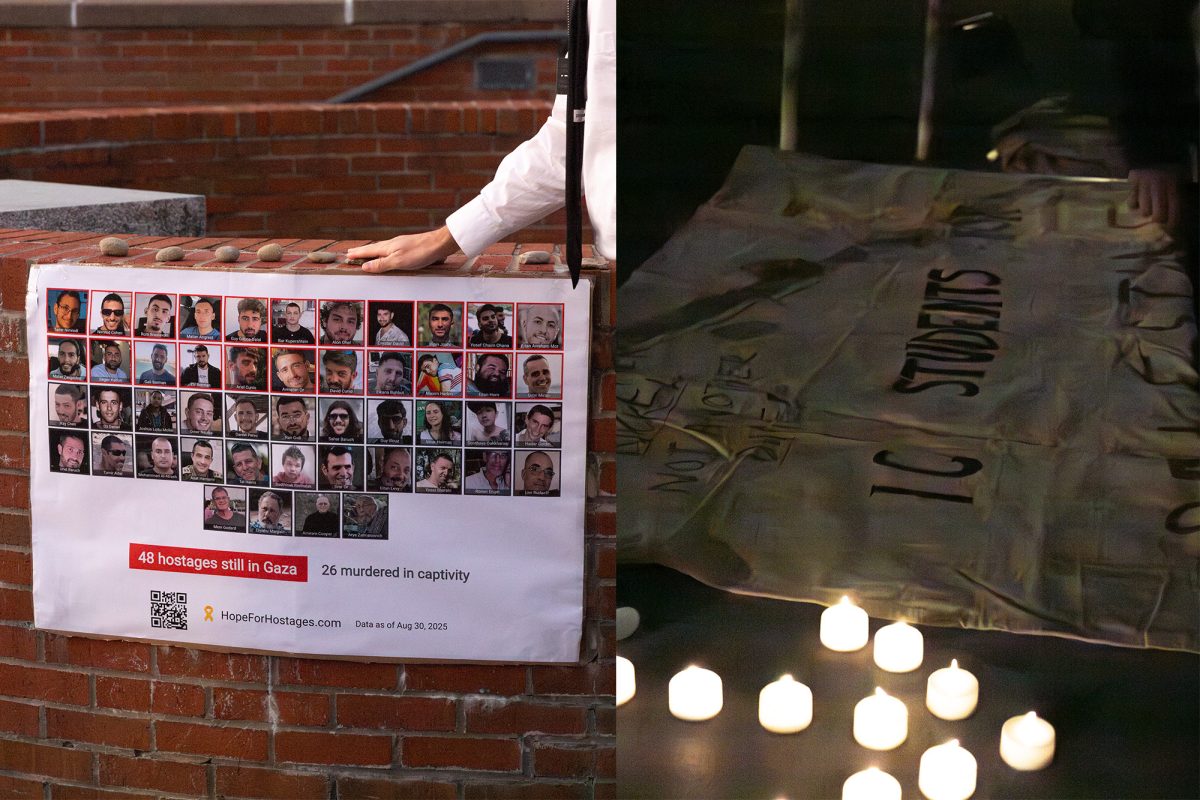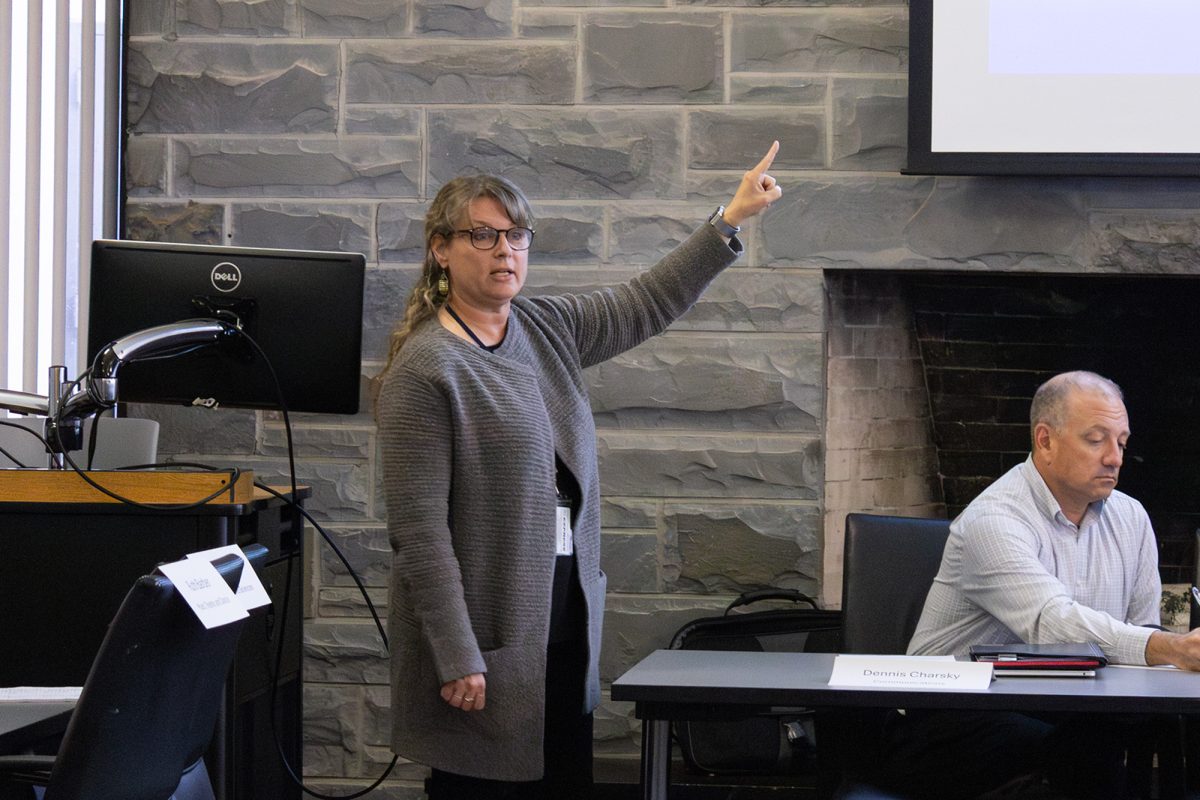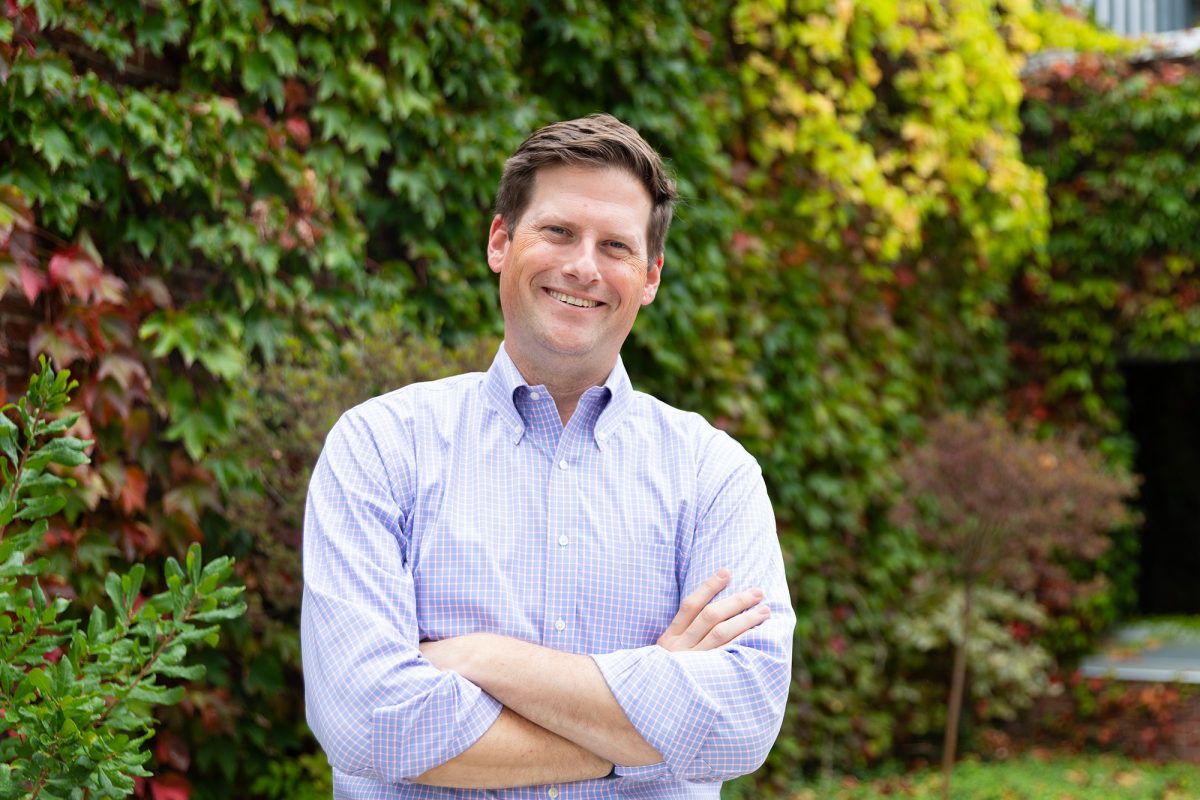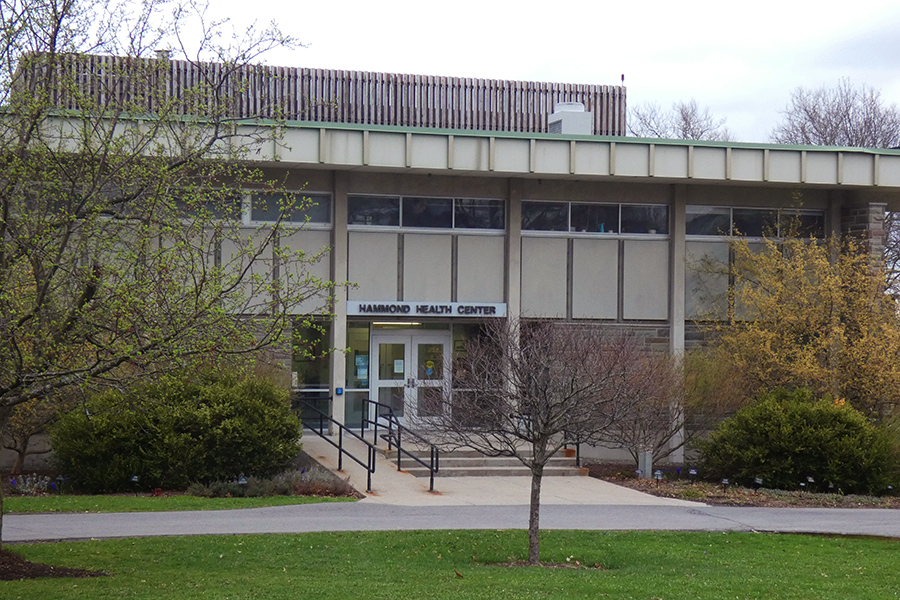Since July 28, through summer rain or sunshine, Ithaca College students have been darting through town with walkies, filming equipment or makeup supply bags slung over their shoulders. Science fiction has found a home on Earth with the production of an independent film overrun with the handprints of students from the college.
Produced by Waterloom Productions, “In Fading Light” — the films working title — was shot in Ithaca and Cortland and had 75 people working on the production, 61 of whom were affiliated with the college as students, faculty, staff or alumni.
Directed by Andy Watts, associate professor and film program director in the Department of Media Arts, Sciences and Studies, the film is a science fiction love story highlighting the disparities between humanity and technology. The film takes place in a future where people have suppressed their emotions, while one woman enters a simulation of the past and is confronted with human feelings.
Junior Ryan Kretz, key and walkie production assistant, said it has been an incredible opportunity to work side by side with professionals.
“The most rewarding part of this job is you can learn all this stuff in film school and you can be told all this, but it won’t stick with you unless you’re there observing it,” Kretz said.
In a joint statement sent via email, the producers said all PAs were paid at least minimum wage and all other professionals negotiated individual rates. The statement said “In Fading Light” is a non-union film not required to pay union rates and that the wage scale was determined for individuals based on experience and a need for further on-the-job training.
“Students hired by Waterloom Productions LLC earned real titles – and some earned hours towards joining [unions representing their specialty] and we’re proud to have helped them break into an incredibly competitive field,” the statement said.
Other actors in the cast include Dylan Baker, known for his roles in “Happiness (1998),” the “Spider-Man” films and the TV series “The Good Wife (2016)” and Miku Martineau, known for her roles in “Kate (2021),” “Honor Society (2022)” and TV project “Star Trek: Section 31 (2025).” Daniel Reed Ferrell is another actor in the film known for his part in “City of Love (2023).”
Jesse Wendelken ’21, the set photographer, said that the department heads have been patient and generous with the new student workers who are learning what industry standards are. He said they had created a really well-oiled machine within the first week.
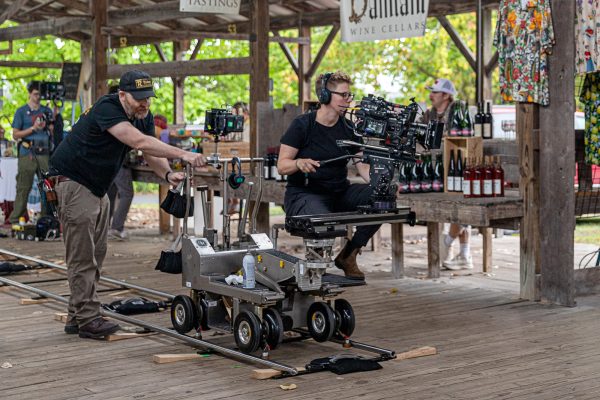
“People are going to leave this with a huge amount of knowledge that they probably would not have gotten just jumping right into the deep end of another set where people wouldn’t be willing to teach like they are here,” Wendelken said. “We haven’t sacrificed any of our product because of that, so that’s fantastic.”
Wendelken said “In Fading Light” was born out of the anxieties and chaos of the COVID-19 pandemic and the impact of AI on the arts. He said that everything is about perspective in the news and that science fiction moves complex topics by one degree, allowing the viewer to see a new angle.
“In media, [in order to express] complex ideas that we’re dealing with on the day to day in a way that people can understand and in a way that has narrative cohesion, I think weaponizing genres in a certain way can be extremely beneficial,” Wendelken said.
Rachel Wagner, professor and chair in the Department of Philosophy and Religion, teaches a class on science fiction and religion and said the genre takes circumstances from the world as we know it and adds a scientifically plausible new element — the novum. The novum, in turn, allows examination of the human experience through an alternate lens.
“With technology changing so rapidly, right now we need these … mediated spaces of the human imagination, these projections of the human imagination, to give ourselves warning about what could happen,” Wagner said. “I think that they have potential to work almost what some religious people would call prophetically.”
In “In Fading Light,” Bryan Fitzgerald, an actor in the film who has also played parts in “The Family McMullen,” “Swipe,” “FBI” and “13 Reasons Why,” plays Brian Jones, a scientist riddled with anxiety and depression who invents a gene therapy to suppress emotion in an attempt to help himself and humanity avoid conflict and self-destruction. Fitzgerald said his character does not understand the negative impact his technology will have on the future.
“Science is always trying to make the world a better place, but sometimes these things are taken too far by whether it be corporations or governments or people in power and then they have unintended consequences,” Fitzgerald said.
Brian Dole, known for “The Equalizer (2022),” “The Boys in the Band (2020)” and “The Saint of the Impossible (2020),” plays Ian Jones in the film and said that through the advancement of technology, the movie shines a light on how the world is missing conversation, listening and being open.
“Everybody’s so divided because of screens as opposed to sitting and being with somebody and feeling their energy,” Dole said. “Emotions are what we are, and yes, they’re fleeting, but being able to express that with each other is everything.”
Wagner said that there is a significance to being able to explore “what if” scenarios, because it can reveal outcomes people may not have considered. She said if we can only imagine one outcome, then the likelihood of changing that perceived outcome becomes much lower.
“The imagination and the arts in general … can sort of crack open those possibilities and say, ‘Well, what if this other thing happened,’” Wagner said. “Either as a warning of bad things that can happen, but even [showing a negative outcome] is trying to crack open the possibilities of doing something otherwise.”
While some science fiction may take place on other planets or alien ecosystems, Ithaca and its neighboring city, Cortland, have supplied this film with the structures and landscapes it needed.
However, securing filming locations in Ithaca was not exactly a walk in the park. Robert Corna, locations manager and production supervisor as well as an assistant professor in the Department of Media Arts, Sciences and Studies, said that securing Stewart Park was more difficult than when he had to secure locations in Central Park in New York City.
“I just have to say there’s a strange bureaucracy in [Ithaca] that makes it difficult to get a film permit approved,” Corna said. “I was literally told you’re going to have to jump through all these different hoops, by people that work for the city.”
Nonetheless, Fitzgerald said that Ithaca seemed like a great place to make movies and that everyone has been welcoming. Stewart Park is known for being the home of Wharton Studio, an early silent film production company from 1914-1919. The former studio building is now the Wharton Studio Museum. Besides Stewart Park, they also filmed at Ithaca Tompkins International Airport and at Ithaca College.
When securing filming permits is difficult Corna said he has to think creatively and that people don’t always realize that part of his job.
“In [the] film world, this is a low-budget movie, so we didn’t have a huge budget for the locations, so that also goes into the strategy,” Corna said. “Let your limitations be your liberations, that’s when the creativity comes in.”
According to a statement from the producers, the budget was approximately $1.5 million, supplied from private investments and contracted services through local vendors. The statement said the college was contracted as a vendor for room rentals, catering and crew lodging.
When they weren’t able to film in Ithaca, Corna said Cortland all but rolled out the red carpet for them. Corna said they filmed in the 1890 House Museum in Cortland and that their filming gave the museum and other businesses in the area under construction more exposure.
“We reached out to the mayor and said… let us know the restaurants that were impacted by the construction and we’ll use them as our caterers, just kind of give them a little help,” Corna said. “It was really like we helped each other out.”
Community played a part in and out of filming, from working with the surrounding population to teaching the next generation of filmmakers.
“It’s an incredible opportunity, because you can have people [with] very little experience, to seasoned veterans … so you’re able to see how they operate,” Kretz said. “And it’s a great educational opportunity for those people to teach the next generation and just keep that cycle going of production.”


